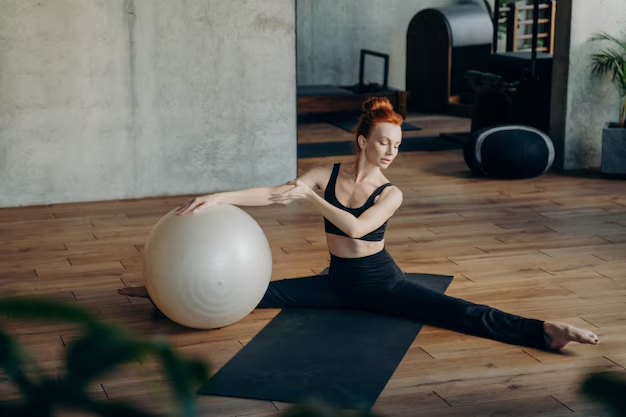Enhancing Stability: Practical Tips to Improve Balance and Prevent Falls
Imagine walking into a room with confidence, grounded in every step, without the lurking fear of losing your footing. Maintaining balance and preventing falls is crucial for everyone, from young athletes to older adults aiming to stay active. Balance is a skill, much like any other, and it can be improved through conscious practice and simple lifestyle adjustments. This guide delves into the art of stability, offering a holistic view on how you can maintain and enhance your balance to lead a safe, active life.
Why Balance Matters
Having good balance isn't just for gymnasts or tightrope walkers; it's essential in daily life. Reduced balance can lead to falls, which are one of the most common causes of injury among people of all ages. Whether you're looking to improve athletic performance or reduce fall risk as you age, developing balance is a key piece of the puzzle.
Key Benefits of Good Balance:
- Enhances mobility and coordination
- Supports physical activities and sports
- Reduces risk of falling and injury
- Improves overall quality of life
Understanding Balance
Balance is the ability to maintain your body's center of mass over its base of support. It involves visual input, inner ear signals, proprioception (awareness of body position), and muscular control.
Components of Balance
- Visual Inputs: Your eyes send signals to your brain about your position relative to your surroundings.
- Vestibular System: Located in the inner ear, this system helps maintain equilibrium.
- Proprioception: Sensory nerves in your muscles and joints provide information about body position.
- Core and Muscle Strength: Strong muscles help control body movements and maintain posture.
Exercises to Improve Balance
Regularly practicing balance exercises can significantly lower the risk of falls and improve performance in various physical activities.
Basic Balance Exercises
Single-Leg Stands: Stand on one foot while keeping the other leg raised. Hold for 10-15 seconds; if comfortable, try closing your eyes. Repeat on the other leg.
Heel-to-Toe Walk: Walk in a straight line, placing the heel of one foot directly in front of the toe of the other foot. Please repeat for 10 steps.
Balance on Toes: Stand with feet shoulder-width apart, rise on your tiptoes, and hold for 5-10 seconds before gently lowering.
Advanced Balance Workouts
Tai Chi: A gentle martial art form emphasizing slow, controlled movements and stress reduction, enhancing balance and coordination.
Bosu Ball Training: Use a Bosu ball to perform squats or lunges, as the unstable surface intensifies the workout, thereby improving balance and core strength.
Yoga: Poses like Tree Pose, Warrior III, or Eagle Pose are effective for balance training, promoting body awareness and muscle engagement.
Lifestyle Changes to Support Balance
Strengthening the Core
A robust core acts as the foundation for good balance, supporting your spine and aiding in stability.
- Planks and Bridges: Regularly practicing planks and bridges among core workouts can build a strong abdomen, enhancing balance.
- Pilates: Known for improving core strength, flexibility, and posture, Pilates can be a valuable addition to your exercise routine.
Maintaining Flexibility
Inflexible muscles can impede movement and increase the risk of falls.
- Regular Stretching: Engage in daily stretching routines, focusing on key muscle groups like hamstrings, calves, and hip flexors.
- Dynamic Warm-Ups: Before any physical activity, a good warm-up involving dynamic stretches can prepare muscles for full extension.
Environmental Adjustments
Home Safety Tips
Creating a safe environment is essential to preventing falls at home.
- Remove Obstacles: Keep pathways clear of clutter and loose rugs.
- Install Grab Bars: In bathrooms, use grab bars in showers and next to toilets for extra support.
- Adequate Lighting: Ensure all areas of your home are well-lit, especially stairways and hallways.
Footwear Considerations
Footwear significantly impacts balance. Choose shoes that provide adequate support and are appropriate for the activity.
- Sturdy Shoes: Opt for shoes with firm grips and good ankle support.
- Avoid Slippers and Flip-Flops: These offer little in arch support and can increase slip risk.
Mental and Physical Health
Nutrition and Balance
Vital nutrients contribute to muscle health and bone density, directly influencing balance.
- Calcium and Vitamin D: These nutrients are crucial for bone strength and should be included as part of a balanced diet.
- Omega-3 Fatty Acids: Found in fish, these acids support joint and muscle health.
Staying Mentally Sharp
Mental health also plays a role in maintaining balance; stress and anxiety can impact physical stability.
- Mindfulness Meditation: Regular meditation can enhance focus and calmness, contributing to better body awareness.
- Stress Management: Techniques like deep breathing and progressive muscle relaxation can reduce stress, promoting overall balance.
Summary of Practical Tips 📋
- 💪 Exercise Regularly: Practice single-leg stands, tai chi, or yoga.
- 🧘 Focus on Core Strength: Incorporate planks and Pilates into your exercises.
- 🏠 Home Safety: Keep walkways clear, install grab bars, and ensure proper lighting.
- 👟 Choose Proper Footwear: Opt for supportive and stable shoes.
- 🥗 Nutritional Support: Ensure a diet rich in calcium and Omega-3s.
- 🧠 Mental Health: Engage in mindful practices to enhance focus and calm.
By deliberately incorporating these strategies into your daily routine, you can boost your balance, reduce the risk of falls, and enjoy a more stable and secure lifestyle. Remember, balance is a skill that improves with practice, patience, and persistence. As you build on these exercises and habits, you’ll discover newfound confidence in each step you take.

Related Topics
- Best Low-Impact Exercises For Seniors
- Chair Exercises For Seniors
- How To Build Muscle Strength After 60
- How To Find a Personal Trainer Specializing In Senior Fitness
- How To Find a Senior-Friendly Fitness Class
- How To Incorporate Stretching Into Your Daily Routine
- How To Prevent Injury While Exercising As a Senior
- How To Safely Use Exercise Equipment As a Senior
- How To Set Realistic Fitness Goals As a Senior
- How To Start a Fitness Routine After 60